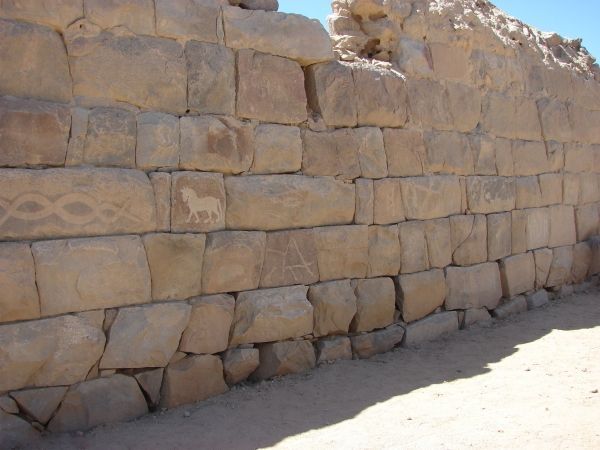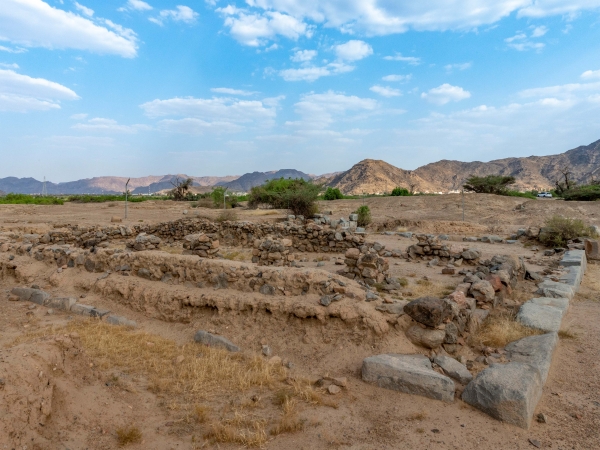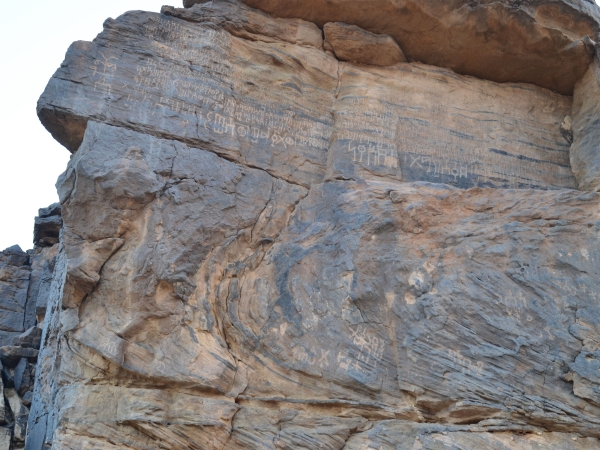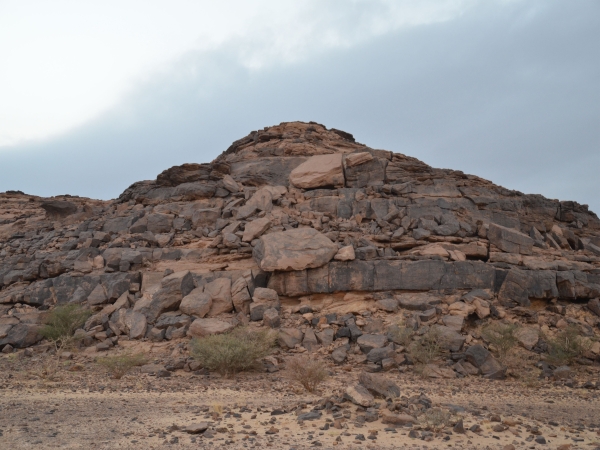




Najran Province, located in the southwest of the Kingdom of Saudi Arabia, features several archaeological sites. An important center along the ancient caravan route, it was a passageway for the tribes of the west and central Arabian Peninsula. Its archaeological sites include:
Hima Site
The Hima rock art area comprises 550 rock art panels featuring hundreds of thousands of rock inscriptions and petroglyphs. They are written in various ancient scripts, including Thamudic, Nabataean, Ancient South Arabian, Syriac, and Greek scripts. The rocks are also the site for early Arabic engraved inscriptions marking the basis of modern Arabic script.
Al-Okhdood Site
The site is home to the ancient city of Najran, mentioned as N J R N in the inscriptions engraved in Ancient South Arabian script. Al-Qalaah or al-Qasaba is the prominent element of the site and is the remains of an integrated city dating back to the period between 500 BCE and the first century CE.
Al-Mundafin Site
Located in eastern Najran, the site is home to Uruq al-Mundafin Lake, dating back to the era spanning through the end of the Pleistocene epoch to the beginning of the Holocene epoch (twelve - 120,000 years ago). Animal fossils and flint stone tools were found on the site with several burial mounds dating back to the bronze age in Shaab al-Masma Site.
Historical wells
Najran is known for its historical wells that served as water supply stops for trade caravans. Among its most notable wells are Hima Wells in the north of Najran city, al-Husayniyah Well in the center of al-Husainiya in the governorate of Hubuna, Yadma Well in the governorate of Yadmah, the ancient well in the historical castle of the emirate, and al-Khatmah Wells, located west of the southern al-Arid Mountains.
Al-Thuwaila Site
Located northwest of Najran, the site dates back to the Acheulean and the Mousterian ages. It comprises many circular burials scattered upon hills. The site is also home to strip and extended stone constructions dating back to the first or second century BCE.
Related quizzes
Related articles
